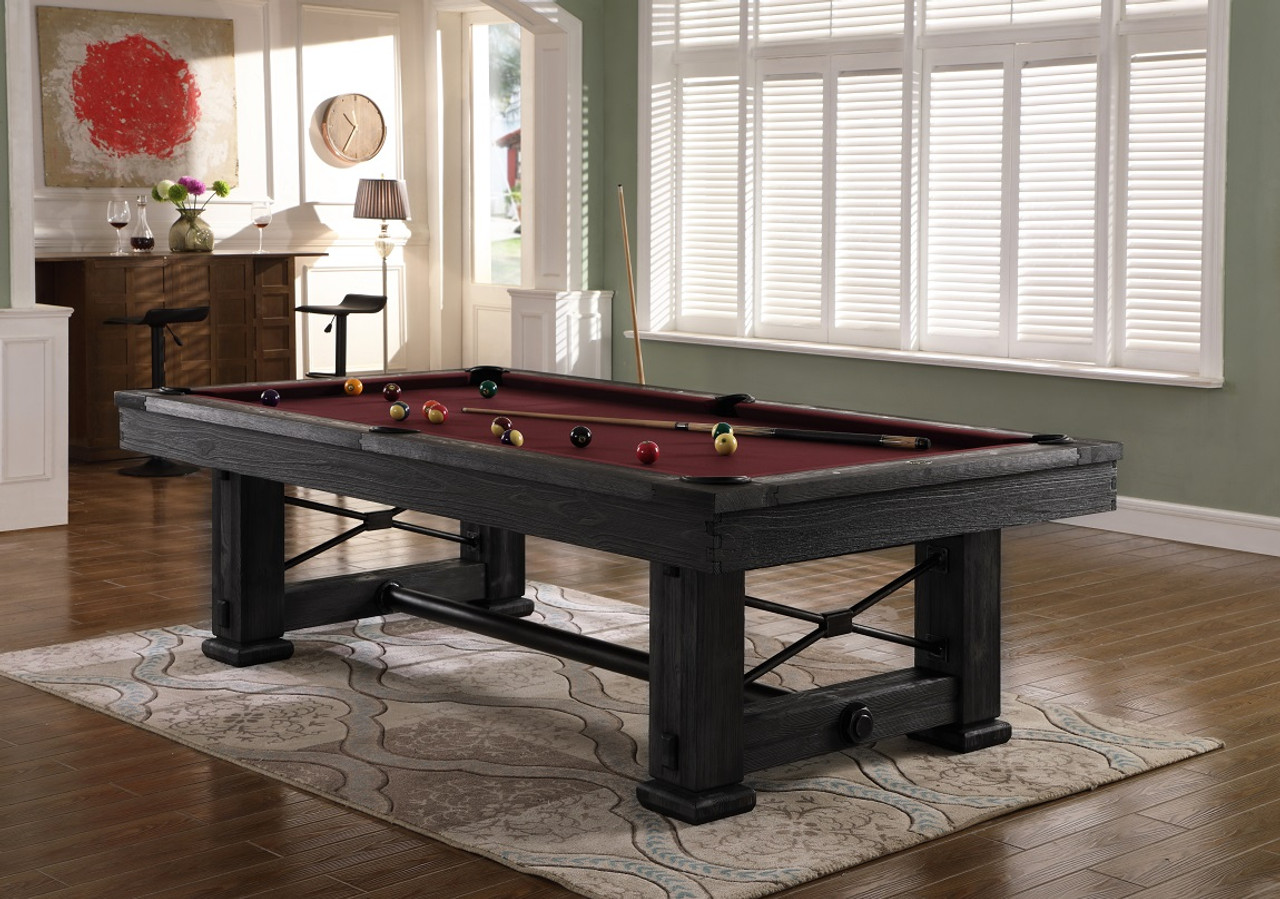When choosing a pool table for home use, slate surfaces are preferred for their durability and consistent play. This article outlines practical guidance on selecting the best slate pool tables, highlighting essential factors such as style, size, and setup requirements.
Understanding Slate Pool Tables
Slate is a fine-grained rock that is split into sheets to form the playing surface of a pool table. Its primary appeal lies in its flatness and long-term stability, which ensure accurate ball roll and minimal warping over time. Slate pool tables are often used in both residential and commercial settings because of their reliability.
Unlike MDF or plywood surfaces, slate provides a professional-level experience. However, because slate is heavy, these tables require proper installation and support. They also tend to be more expensive, but the investment often pays off in longevity and performance.
Why Choose Slate Over Other Materials?
Performance Consistency
Slate ensures that the ball rolls smoothly across the surface, making it easier to control shots and maintain accuracy. This consistency is critical for players looking to replicate a competition-grade experience at home.
Durability and Longevity
Slate pool tables last for decades if maintained properly. They are less prone to warping or damage compared to wood-based alternatives. For households where the table will see regular use, slate remains a dependable choice.
Professional Quality
Many leagues and tournaments use slate tables. For serious players or those who enjoy high-quality recreational play, investing in a slate pool table ensures that the game feels authentic.

Choosing the Right Size for Your Space
Pool tables come in several standard sizes. Choosing the correct dimensions depends on the room where the table will be placed.
Common Pool Table Sizes
- 7-foot table: Often called a "bar size," it fits well in smaller rooms and is suitable for casual play.
- 8-foot table: A common choice for home use. It offers a balance between space efficiency and gameplay quality.
- 9-foot table: Typically used in professional settings. Requires a larger room and more clearance space for cueing.
Before purchasing, measure your space carefully. Ensure there’s at least five feet of clearance around the table for unobstructed shots.
Room Size Guide
|
Table Size |
Room Size with 57" Cue |
Room Size with 48" Cue |
|
7 ft |
17' x 13' |
15' x 11' |
|
8 ft |
18' x 14' |
16' x 12' |
|
9 ft |
19' x 14.5' |
17' x 13.5' |
Use shorter cues in tighter spaces to maintain playability without compromising shot quality.
Slate Thickness: What You Should Know
Slate pool tables come with varying slate thickness, commonly between ¾ inch and 1 inch. One-inch slate is the standard for most high-quality tables and is often approved by professional pool associations.
Single-Piece vs. Three-Piece Slate
- Single-piece slate: Easier to install in open spaces. Less risk of joint misalignment.
- Three-piece slate: More manageable during delivery and setup. Offers more precise leveling.
For home use, a three-piece slate is generally more practical due to easier handling and better leveling during installation.
Styles of Slate Pool Tables
Slate pool tables come in various styles to suit different interior aesthetics. While performance remains a priority, the table’s appearance should also blend well with your home décor.
Traditional
Features carved legs, wood finishes, and ornate designs. These tables often serve as focal points in classic-style game rooms.
Contemporary
Modern designs with clean lines, metal accents, and minimalist frames. Ideal for urban apartments or modern interiors.
Rustic
Made with reclaimed wood or rough finishes. Suits cabin-style homes or rustic basement setups.
Consider matching the table’s materials and finish with your existing furniture for visual harmony.

Setup and Maintenance Considerations
Installing a slate pool table requires precision and experience. Because slate is heavy and fragile, professional installation is recommended.
Leveling the Table
Even slight unevenness in the slate can affect gameplay. Ensure that the table is leveled correctly and rechecked periodically, especially if the floor settles over time.
Cloth and Cushion Care
The cloth covering the slate should be cleaned regularly with a soft brush to prevent dust accumulation. Replace it every few years depending on usage.
Cushions (or rails) should be checked for responsiveness. Over time, they may harden and reduce rebound quality, requiring replacement.
Tips for Buying a Slate Pool Table for Home Use
Choose Reputable Brands
Stick to established manufacturers with a history of quality. Brands like Brunswick, Olhausen, and Diamond are known for their craftsmanship and durability.
Assess Floor Strength
Slate tables are extremely heavy. Verify that your floor can support the weight—especially if placing the table on an upper level.
Check for Warranty
A solid warranty can cover slate defects, frame issues, or cushion failure. Always inquire about terms before purchasing.
Budget for Accessories
Don't forget to include the cost of cues, balls, racks, and lighting in your budget. A quality pool table setup requires more than just the table.
Summary:
Slate pool tables offer an unmatched playing experience for home use, but selecting the right one depends on understanding space constraints, aesthetic preferences, and performance expectations.
From traditional wooden frames to sleek modern finishes, there is a slate pool table for every style of home. Prioritize proper installation and regular maintenance to extend the life of your investment.





